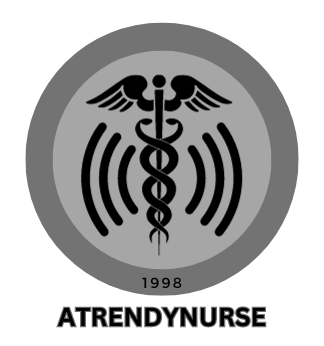PATHOPHYSIOLOGY
Viral hepatitis may be caused by one of five viruses that are capable of infecting the liver: hepatitis A (HAV), B (HBV), C (HCV), D or delta (HDV), or E (HEV). HDV is not a stand-alone hepatitis. HDV does not exist outside the presence of HBV. A sixth virus, hepatitis G (HGV), has been isolated in a few cases of hepatitis caused by other viruses of the five common strains.
It is not known what the role of HGV is in liver disease, nor are clinical manifestations, natural history, or pathogenesis known. Although symptomatology is similar among all the hepatitis viruses, immunologic and epidemiologic characteristics are different. When hepatocytes are
damaged, necrosis and autolysis can occur, which in turn lead to abnormal liver functioning. Generally these changes are completely reversible after the acute phase. In some cases, however, massive necrosis can lead to acute liver failure and death.
Chronic hepatitis is inflammation of the liver for more than 6 months. Forms of chronic hepatitis are associated with infection from HBV, HCV, and HDV; viral infections such as cytomegalovirus (CMV); excessive alcohol consumption; inflammatory bowel disease; and autoimmunity (chronic active lupoid hepatitis).
Alcoholic hepatitis occurs as a result of tissue necrosis caused by alcohol abuse; it is nonviral and noninfectious. Generally it is a precursor to cirrhosis, but it may occur simultaneous with cirrhosis.
Jaundice is discoloration of body tissues from increased serum levels of bilirubin (total serum bilirubin more than 2.5 mg/dL) and can occur with any hepatitis. Jaundice may be seen in any patient with impaired hepatic function and occurs as bilirubin begins to be excreted through the skin. There is also an increased excretion of urobilinogen and bilirubin by
the kidneys, resulting in darker, almost brownish, urine. Jaundice
is classified as follows.
Prehepatic (hemolytic): Caused by increased production of bilirubin following erythrocyte destruction. Prehepatic jaundice is implicated when the indirect (unconjugated) serum bilirubin is more than 0.8 mg/dL.
Hepatic (hepatocellular): Caused by dysfunction of the liver cells (hepatocytes), which reduces their ability to remove bilirubin from the blood and form it into bile. Hepatic jaundice is also implicated with indirect serum bilirubin and is associated with acute hepatitis.
Posthepatic (obstructive): Caused by obstruction of the flow of bile out of the liver and resulting in backed-up bile through the hepatocytes to the blood. Posthepatic jaundice is implicated when direct serum bilirubin is more than 0.3 mg/ dL.
ASSESSMENT
Signs and symptoms: Nausea, vomiting, malaise, anorexia, epigastric discomfort, aversion to smoking, muscle or joint aches, fatigue, irritability, pruritus, slight to moderate temperature increases, dark urine, clay-colored stools, and jaundice.
Acute hepatic failure: Nausea, vomiting, and abdominal pain tend to be more severe. Jaundice is likely to appear earlier and deepen more rapidly. Mental status changes (possibly progressing to encephalopathy), coma, seizures, ascites, sharp rise in temperature, significant leukocytosis, coffee-ground emesis, gastrointestinal (GI) hemorrhage, purpura, shock, oliguria,
and azotemia all may be present.
Physical assessment: Presence of jaundice; palpation of lymph nodes and abdomen may reveal lymphadenopathy, hepatomegaly, and splenomegaly. Liver size usually is small with acute hepatic failure.
History of/risk factors: Clotting disorders, multiple blood transfusions, excessive alcohol ingestion, parenteral drug use, exposure to hepatotoxic chemicals or medications (including over-the-counter medications or herbal supplements), travel to developing countries, men who have sex with men, prostitutes/ heterosexuals with multiple sexual partners, injection drug users.
Nursing Diagnosis:
Fatigue: related to decreased metabolic energy production occurring with faulty absorption, metabolism, and storage of nutrients.
Desired Outcome: By at least 24 hr before hospital discharge, the patient relates decreasing fatigue and increasing energy.
| Nursing Interventions | Rationales |
|---|---|
| Take a diet history to determine food preferences. Consult the dietitian regarding increased intake of carbohydrates or other high-energy food sources within prescribed dietary limitations. Encourage significant others to bring in desirable foods if permitted. Monitor and record intake. | In general, dietary management consists of giving palatable meals as tolerated without overfeeding. If oral intake is substantially decreased, parenteral or enteral nutrition may be initiated. Sodium restrictions may be indicated in the presence of fluid retention. Protein is moderately restricted, or eliminated, depending on the degree of mental status changes (i.e., encephalopathy). If no mental status changes are noted, normal amounts of high biologic value protein are indicated to facilitate tissue healing, promote energy, and decrease fatigue. All alcoholic beverages are strictly forbidden. When appetite and food selection are poor, vitamins may be given to supplement dietary intake. |
| Encourage small, frequent feedings, and provide emotional support during meals. | Smaller and more frequent meals are usually better tolerated in patients who are fatigued, nauseated, and anorexic. |
| Provide rest periods of at least 90 min before and after activities and treatments. | Rest facilitates recovery after the body has experienced stress and may be indicated when symptoms are severe, with a gradual return to normal activity as symptoms subside. |
| Advise the patient to avoid exercise immediately after meals. | Exercise after meals increases the potential for nausea and vomiting, which could cause loss of nutrients and exacerbate fatigue. |
| Keep frequently used objects within easy reach. | This will help conserve the patient’s energy. |
| Decrease environmental stimuli; provide back massage and relaxation tapes; and speak with the patient in short, simple terms. | These measures promote rest and sleep and decrease sensory overload. |
| Administer acid suppression therapy, antiemetics, antidiarrheal medications, and cathartics as prescribed. | These agents minimize gastric distress and promote absorption of nutrients, which will help provide energy and reverse feelings of fatigue. |
Nursing Diagnosis:
Deficient Knowledge: related to unfamiliarity with causes of hepatitis and modes of transmission
Desired Outcome: Within the 24-hr period before hospital discharge, the patient verbalizes knowledge about the causes of hepatitis and measures that help prevent transmission.
| Nursing Interventions | Rationales |
|---|---|
| Assess the patient’s health care literacy (language, reading, comprehension). Assess culture and culturally specific information needs. | This assessment helps ensure that information is selected and presented in a manner that is culturally and educationally appropriate. |
| Assess the patient’s knowledge about the disease process, and educate as necessary. | Determining a patient’s level of knowledge will facilitate development of an individualized teaching plan. |
| Make sure the patient knows you are not making moral judgments about alcohol/drug use or sexual behavior. | This will promote the patient’s confidence in you. |
| Teach the patient and significant others the importance of wearing gloves and using good hand hygiene if contact with body fluids such as urine, blood, wound exudate, or feces is possible. | These measures help prevent spread of infection. |
| If appropriate, advise patients with HAV that crowded living conditions with poor sanitation should be avoided. | This information may prevent recurrence. |
| Remind patients with HBV and HCV that they should modify sexual behavior as directed by the health care provider. Explain that blood donation is no longer possible. | For patients with HBV and HCV, contact with blood is a likely mode of transmission, and blood contact can occur with some types of sexual activities. For patients with HBV, sexual contact is a likely mode. |
| Advise patients with HBV that their sexual partners should receive HBV vaccine. | For patients with HBV, sexual contact is a likely mode of transmission. |
Nursing Diagnosis:
Risk for Impaired Skin Integrity: related to pruritus occurring with hepatic dysfunction
Desired Outcome: The patient’s skin remains intact.
| Nursing Interventions | Rationales |
|---|---|
| Keep the patient’s skin moist by using tepid water or emollient baths, avoiding alkaline soap (which is a stronger soap; use transparent soaps such as a glycerin soap), and applying emollient lotions at frequent intervals. | Hot water and alkaline soaps can dry the skin and may cause irritation in patients with sensitive skin. Emollients and lipid creams (i.e., Eucerin) are used to keep skin moist and supple. |
| Encourage the patient not to scratch skin and to keep nails short and smooth. | These measures help prevent skin breakdown and infection. |
| Suggest use of knuckles if the patient must scratch. Wrap or place gloves on the patient’s hands (especially comatose patients). | Knuckles and gloved hands are less traumatic to the skin and tissue than fingernails. |
| Treat any skin lesion promptly. | This will help prevent infection. Pathogens can enter the body through nonintact skin. |
| Administer antihistamines as prescribed; observe closely for excessive sedation. | Antihistamines may be used for symptomatic relief of pruritus. However, if used, they are administered with caution and in low doses because they are metabolized by the liver. |
| Encourage the patient to wear loose, soft clothing; provide soft linens (cotton is best). | These measures help prevent abrasions caused by tight clothing or rough material on skin that is already compromised. |
| Keep the environment cool. | Cool temperatures help prevent further skin irritation caused by perspiration. |
| Change soiled linen as soon as possible. | This measure helps prevent further irritation caused by waste products or fluids having constant skin contact. |
Nursing Diagnosis:
Risk for Bleeding: related to decreased vitamin K absorption, thrombocytopenia.
Desired Outcome: The patient is free of bleeding as evidenced by negative tests for occult blood in the feces and urine and absence of ecchymotic areas and bleeding at the gums and injection sites.
| Nursing Interventions | Rationales |
|---|---|
| Monitor PT levels daily. | These assessments detect prolonged PT. Optimal range for PT is 10.5-13.5 sec. In hepatitis, PT is prolonged because of inability of the liver to produce coagulation factors. |
| Monitor platelet count daily. | These assessments detect thrombocytopenia. Optimal range is 150,000- 400,000/mm3. In hepatitis, platelet count is decreased because of the decrease in production of thrombopoietin or platelet pooling caused by splenomegaly and portal hypertension. |
| Monitor hematocrit (Hct) and hemoglobin (Hgb) daily. | These assessments detect decreases that may indicate occult bleeding. Optimal ranges are Hct 40%-54% (male) and 37%-47% (female) and Hgb 14-18 g/dL (male) and 12-16 g/dL (female). |
| Handle the patient gently (e.g., when turning or transferring). | This measure helps minimize risk of bleeding within the tissues. |
| Minimize intramuscular (IM) injections. Rotate sites, and use smallgauge needles. Administer medications orally or intravenously when possible. | Bleeding may result from use of large-bore needles. Rotating sites helps prevent tissue damage caused by frequent injections in same tissue. |
| Apply moderate pressure after an injection, but do not massage the site. | These measures minimize bleeding at the injection site while preventing excessive pressure on the tissue. |
| Teach the patient to use an electric razor and soft-bristle toothbrush. | These measures minimize risk of bleeding from cuts or abrasions caused by a razor or hard bristles. |
| Administer vitamin K as prescribed. | For patients with prolonged PT, vitamin K is a cofactor that modifies clotting factors to provide a site for calcium binding—an essential part of the clotting function. Patients with severe hepatic failure may not respond to vitamin K and may require transfusions of fresh frozen plasma before invasive procedures. |

